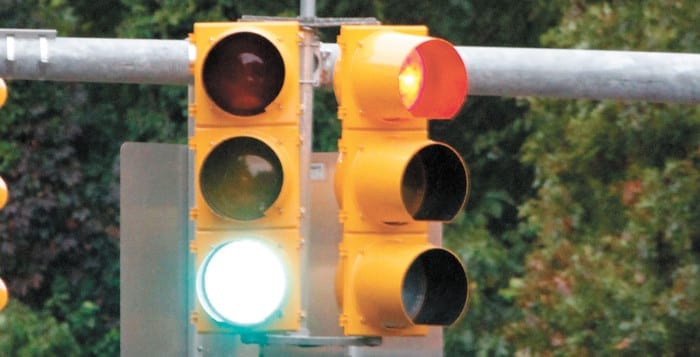When a car runs a red light in Suffolk County, does it make a sound?
Yes. If you listen closely, you’ll hear your wallet being pried open.
Beware the daring driver who goes through a yellow light to traverse a busy intersection. It’ll happen so suddenly. You’ll see a quick flash of white light, followed by a sinking feeling: You just ran a red.
Flash forward weeks later when you get slapped with a $50 ticket. Let’s not forget the $30 administrative fee. And don’t be late with it, or else you could be hit with additional late fees of $25 or more.
Suffolk County’s Red Light Safety Program just feels unjust. Ask any Long Islander about it, and you’re likely to get that eye-roll or an angry tone.
It’s a “money grab,” they’ll say. And they already pay a ton in taxes to live here.
Remember that story over the summer about the Centereach man who used an expandable pole to push the cameras toward the sky? It attracted much attention and numerous shares on social media. To the public, he was known as the “Red Light Robin Hood.” In a follow-up interview with Newsday after his arrest, the man, Stephen Ruth, defended his actions.
“It’s abusive and it’s got to stop,” Ruth told Newsday reporters. “My taxes have doubled. … They keep taking more and more money from people. When is enough, enough?”
GOPers in the Suffolk County Legislature say they feel like Ruth. Some Republicans are calling for greater scrutiny in the program, and some flat out disagree with it all together. A press conference last week singled out the county’s red light program, dubbing it a cheap attempt at building revenue on the backs of everyday citizens.
We agree with that notion, but we do not outright disagree with the program’s premise. Those drivers who purposely whiz through a red light deserve that ticket they’ll eventually receive in the mail, but we don’t feel the same way about drivers slapped with tickets for not stopping enough before a turn at right-on-red intersections. Cameras don’t capture enough of the oncoming traffic in an intersection, in our opinion, to appropriately determine whether or not a right on red was executed safely, and that — to us — is a textbook money grab.
The county says red-light-running is “one of the major causes of crashes, deaths and injuries at signalized intersections.” The action killed 676 people and injured an estimated 113,000 in 2009, the year before the county program was enacted. And nearly two-thirds of the deaths were people other than the red-light-running drivers.
But while it is a noble intention to stop speeders or those who flagrantly disobey the rules of the road, and to prevent fatalities from occurring, we agree with the notion that the measure is a money grab. We agree the county should stop and yield to the concerns of many and evaluate how to make the program better.





